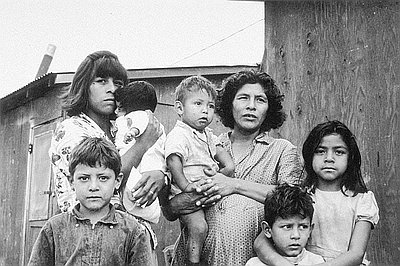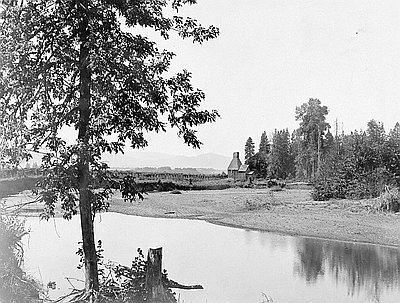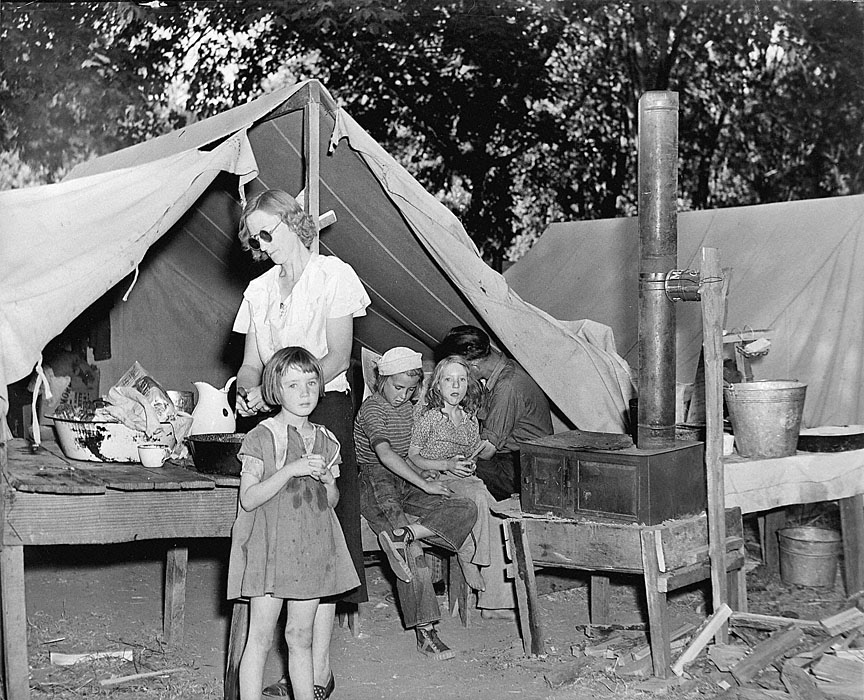- Catalog No. —
- OrHi 72282
- Date —
- 1938
- Era —
- 1921-1949 (Great Depression and World War II)
- Themes —
- Agriculture and Ranching, Environment and Natural Resources, Labor, Trade, Business, Industry, and the Economy, Women
- Credits —
- Oregon Historical Society
- Regions —
- Willamette Basin
- Author —
- Ben Maxwell
Eva Redding and Family
This 1938 photograph shows a woman identified as Eva Redding at a hop farm campground in the Willamette Valley. Hop buds are used to flavor and preserve beer. The other people shown in the photograph might be members of Redding’s family. The 150-acre Williams and Thacker hop farm, located near Independence in Polk County, grew an English variety of hops called “fuggles.” Ben Maxwell was a historian and photographer who worked for the Salem Oregon Journal.
Farmers first planted hops in the Willamette Valley in 1860s, and by 1910, there were a total of more than 14,000 acres of hops in Marion and Polk counties. Farmers hired seasonal wage laborers to pick the hops during the August and September harvest season. Pickers included single women and men, whole families, Native Americans, and immigrants from China and the Philippines. Female pickers often worked with their children working, or playing, nearby. At harvest time, the hop farms were often very social and dances were held at the camps.
During the Depression, migrants from the drought-stricken Great Plains moved into Oregon and many became migrant farm laborers, moving around the Pacific Northwest to harvest hops, berries, potatoes, and other agricultural products. The work was low paying and unsteady.
Further Reading:
Nelson, Herbert. “The Vanishing Hop-Driers of the Willamette Valley.” Oregon Historical Quarterly 64, 1963: 267-271.
Written by Kathy Tucker, © Oregon Historical Society, 2002.
Related Historical Records
-
Women & Children outside Farm Labor Camp
This ca. 1967 photograph shows Hispanic women and children standing near plywood-sided cabins at a farm labor camp in the Willamette Valley. The photograph is from the Valley …

-
Hops Scene, South Yamhill River
This photograph was taken about 1910, depicting a field of hops along the South Yamhill River near Sheridan. The photographer most likely worked for Weister & Co., which …

